The
Lippeaue is a reserve in North Rhine-Westphalia, Germany, that is managed by
the ABU (Arbeitsgemeinschaft Biologischer Umweltschutz). During the last
decades, the ABU transformed the area from a former agricultural area into a
natural floodplain again that is home to a diverse avifauna. The Lippeaue also
is the most important Taurus cattle breeding site in Germany and is where
it all started in 1996. Actually, the first Heck cattle arrived in 1991, but 1996 marked the beginning of Taurus cattle by including Chianina cows, and Sayaguesa cows in the following year. I met with Magret Bunzel-Drüke and Matthias Scharf from
the ABU and discussed about the cattle and lots of other things; I learned a lot and it was a very
enjoyable trip.
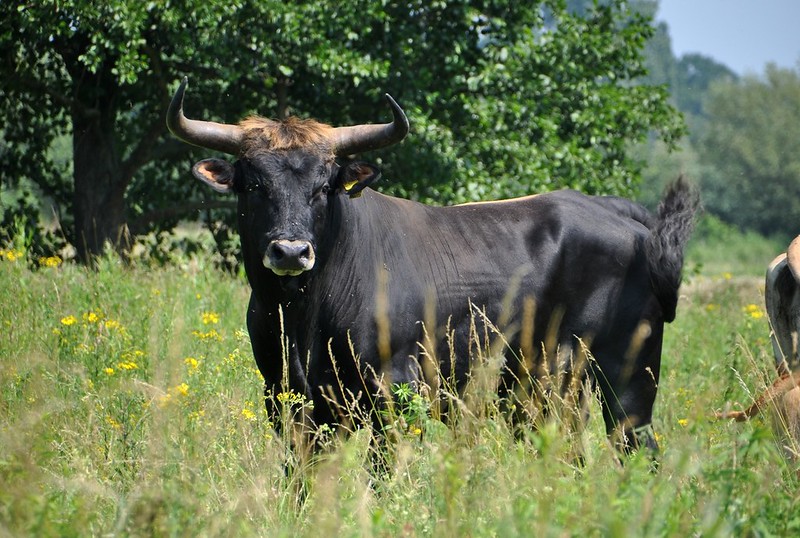 |
| Breeding bull "Lamarck": 50% Sayaguesa, 25% Heck, 25% Chianina |
The cattle
in the Lippeaue are separated into different herds in Hellinghauser Mersch,
Klostermersch and Disselmersch. The Taurus cattle in the Lippeaue number up to
90 individuals (the number is dependent on how many individuals are removed
each year). In the current population, Sayaguesa is the dominating breed in the
crossbreeds with 47 %, followed by Heck 29%, Chianina 20% and Lidia 4%. So the
Taurus cattle actually are more like improved Sayaguesa than improved Heck cattle
today. The influence of Lidia, the Spanish fighting cattle, has been reduced
recently because of their small size and their behaviour that is very difficult
to handle. There are also no pure Heck cattle anymore, so that the cattle keep having a large size and a long-legged body.
 |
"Laola", 50% Sayaguesa 25% Chianina 25% Heck
 |
 |
| 75% Sayaguesa, 12,5 % Heck, 12% Chianina |
Most of the
adult individuals are of the second cross generation (F2), some of F3, and there
is their offspring as well. The breeding bull in the Hellinghauser Mersch, “Lamarck”,
is 50% Sayaguesa, 25% Heck and 25% Chianina and has a very aurochs-like overall
appearance. The other bulls are good too; long legs, an athletic body with an
S-curved back, large skull and good horns. One young bull has Lidia influence. The
dewlap also is not all too long in Taurus cattle. I also like most of the cows,
some had really good and comparably large horns, and especially the very Sayaguesa-influenced
ones have long snouts and a shiny dark colour with a reddish saddle. The colour
of the cows seems to be more variable than that of the bulls, ranging from beige
to light brown, reddish brown or the colour described above. Black cows appear
too, but these still look very nice overall. Unfortunately some individuals can
have white spots on the belly. The colour of the bulls is uniformly dark brown
to black, either solid black or with a kind of saddle on the back. The horn
shape bears a good resemblance to that of the aurochs in many individuals, probably
thanks to the good influence of the Sayaguesa cows and the Neandertal Hecks. The
body of the cattle is surprisingly muscular and athletic, the bulls really look
like large, long-legged and large-horned fighting bulls without having any in
their ancestry. The cow “Larissa” descends from a good half-Sayaguesa bull and
is 62,5% Chianina; I’m curious on how large her male offspring will get.
It would be
interesting to know the exact size of Taurus cattle. But as you can imagine, it
is not easy to measure them. One F1 bull was measured to be about 165 cm tall
at the withers and weighting 1400 kg. Other large bulls might be about the same
size. Judging from what I saw, I think the cows might be around 145 cm tall,
but that’s only a guess.
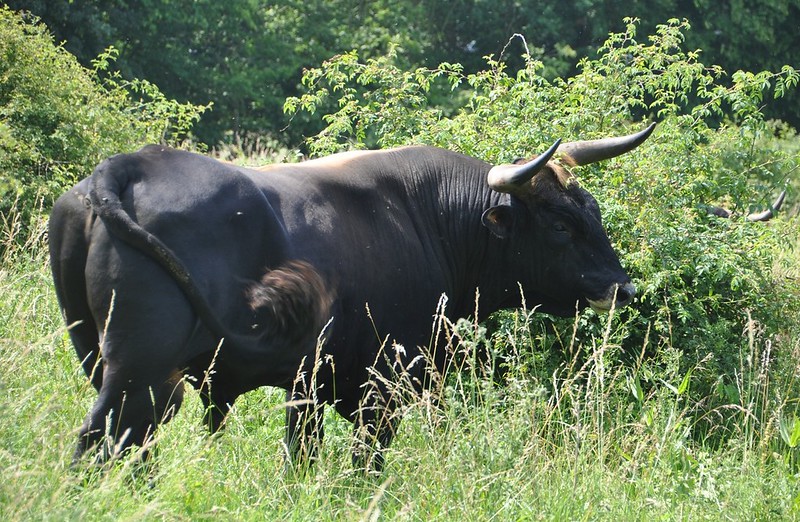 |
| "Lamarck" |
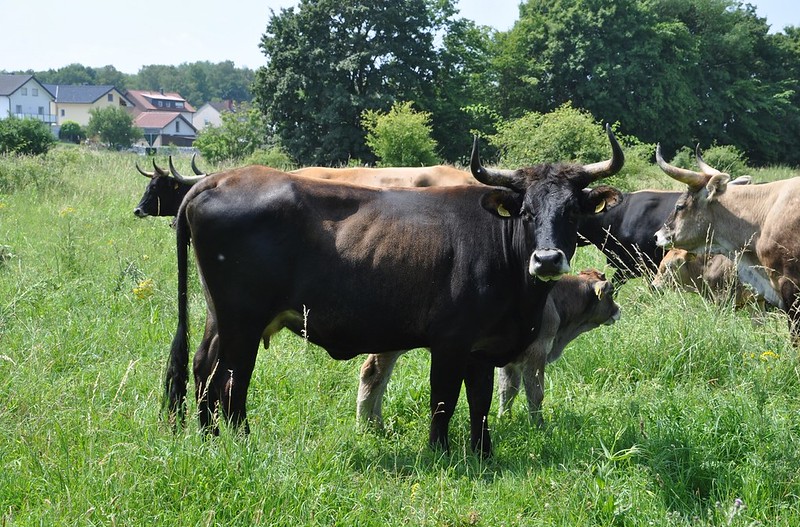 |
| 50% Sayaguesa, 25% Chianina, 25% Heck |
I was also shown
a number of skulls from cross individuals. One of these (the upper one) was
really huge with a horn span of about a meter or so. The skulls resembled Aurochs skulls, but slightly shorter.
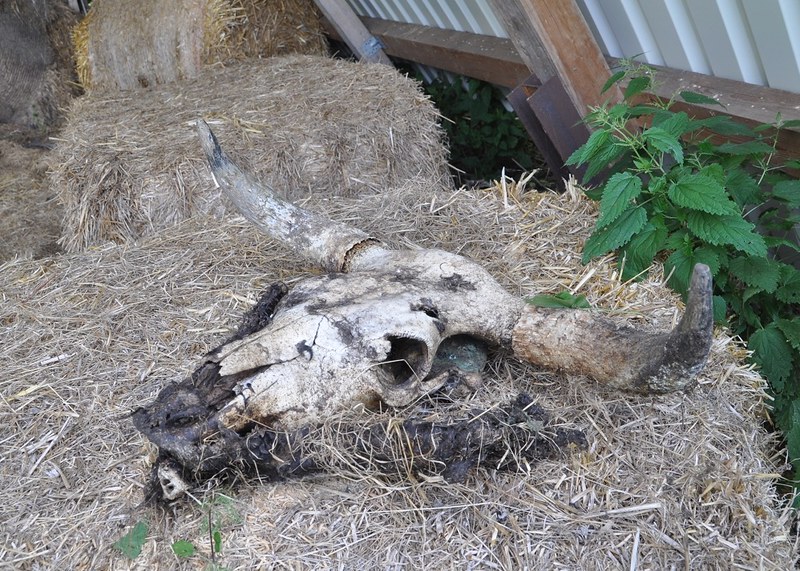

The herds
also include pure Sayaguesa and Chianina cows. My favourite Sayaguesa cow is
named “Dona-Urraca”, she has a very good horn curvature and is fairly large,
and during her 17 years of life she produced a lot of aurochs-like offspring. She is also the only cow that behaves dominant over the horses they share the reserve with. Another
Sayaguesa is very interesting because she has a beautiful, red coat colour (a
rarity in modern Sayaguesa, unfortunately). I also liked the Chianina cows.
Every breed has its pro’s and con’s, and Chianina is better than I initially
thought. Their small horns and the white diluted colour are disadvantages
indeed, but their slim, long-legged and very large body can produce good
results as Taurus cattle demonstrates. And apparently, their hardiness was
largely underestimated, they do just as well as Sayaguesa and Heck cattle.
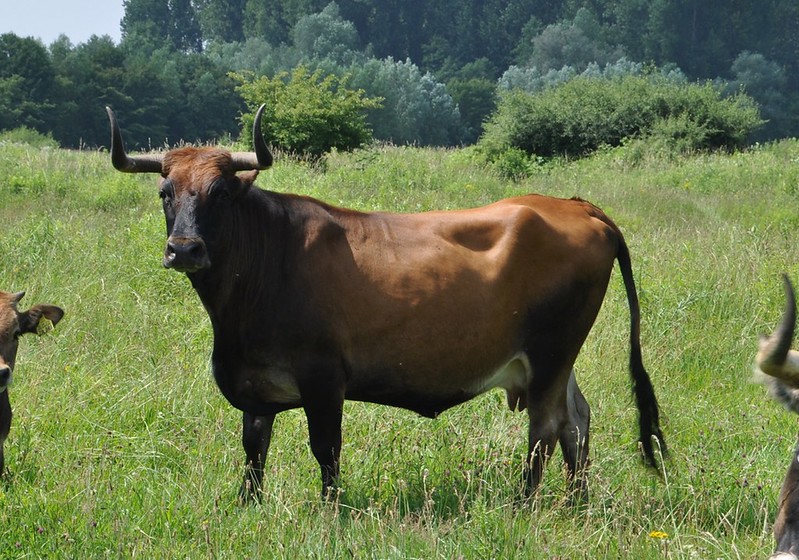 |
| Red pure Sayaguesa cow |
 |
| "Donna-Urraca", pure Sayaguesa cow |
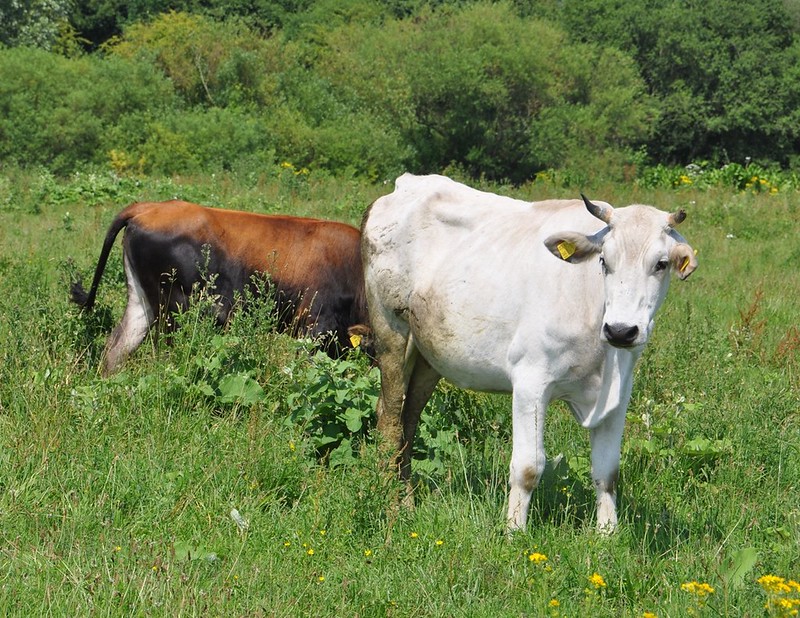 |
| Pure Chianina and a Taurus cow |
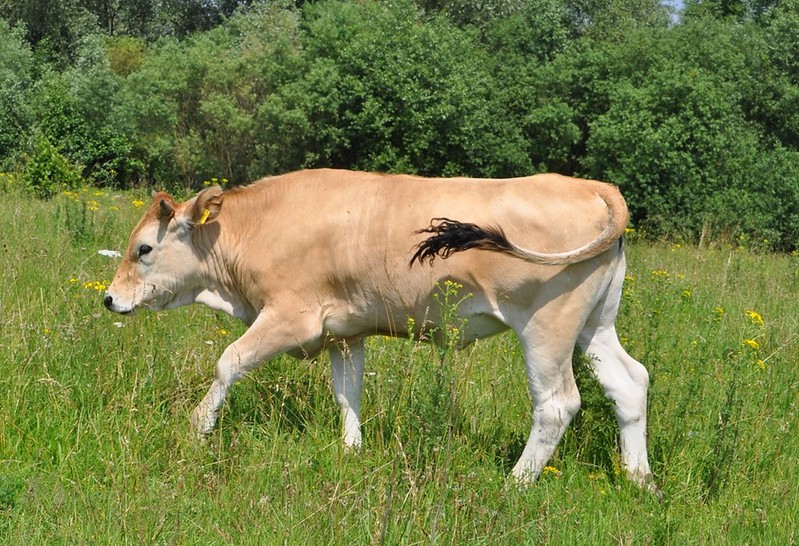 |
| Sayaguesa x Chianina |
The Taurus
herds are fed supplementary during winter, for the simple fact that the reserve
is not large enough for such a large population during the cold season,
especially because it gets partially flooded during the year. Interestingly,
the pure Lidia cows (not present in the current herds anymore) seemed to be the
least dependent from supplementary food. Because of the legal situation in
Germany it is not possible to dedomesticate cattle. The death of individuals would
cause a public outcry that is a danger for the project. Therefore it is not
possible to let weaker animals starve (just like it would happen in nature) to
increase the hardiness, but cattle obviously doing bad still can be selected
out. Furthermore, as I explained in previous posts, numerous cattle breeds
survived in the wilderness in different regions on this world, so probably
Taurus cattle would do so as well.
 |
| Old F1 cow "Lerida", Heck x Sayaguesa |
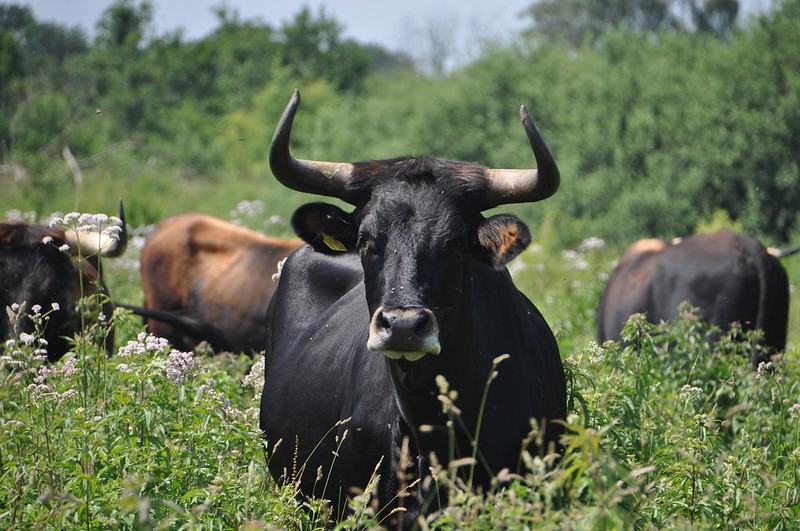 |
| 62% Sayaguesa, 25% Heck, 12,5% Chianina |
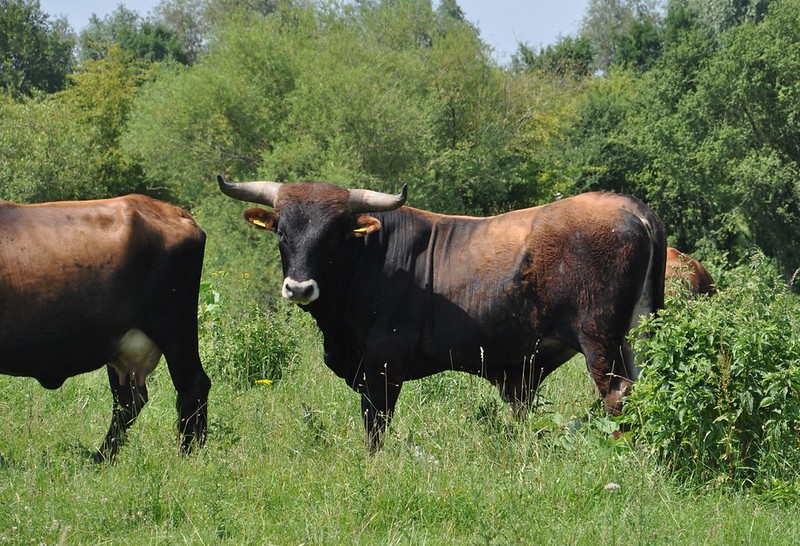 |
| 75% Sayaguesa, 18,75% Heck, 6,25% Chianina |
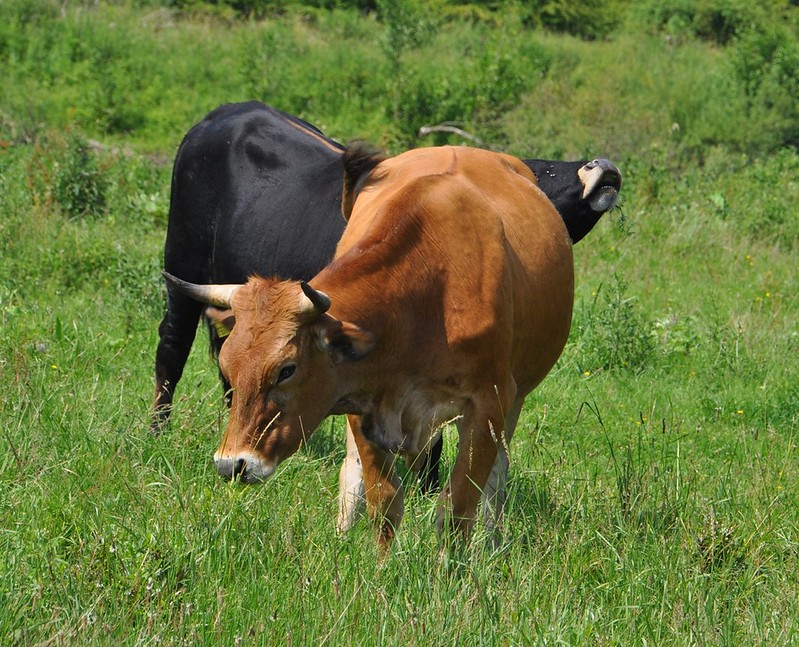 |
| 62,5% Sayaguesa, 31,25% Chianina, 6,25% Heck |
 |
68,8% Sayaguesa 18,7% Heck, 6,25% Chianina, 6,25% Lidia |
The
behaviour of the cattle was interesting. As I mentioned above, the Lidia
influence was reduced to avoid animals too difficult to handle. Of course
all cattle living semi-feral develop a kind of wilder behaviour, so do Taurus cattle.
The behaviour is varying from individual to individual. Some bulls are very
gentle and tame, others might behave shyer and get feisty when caught. Like most semi-feral cattle, they have
a clear herding instinct as well. When running, they appeared comparably swift
and agile, much more like oversized deer than usual sluggish Heck cattle. They can jump over barriers up to 160 cm high, which is quite impressing.
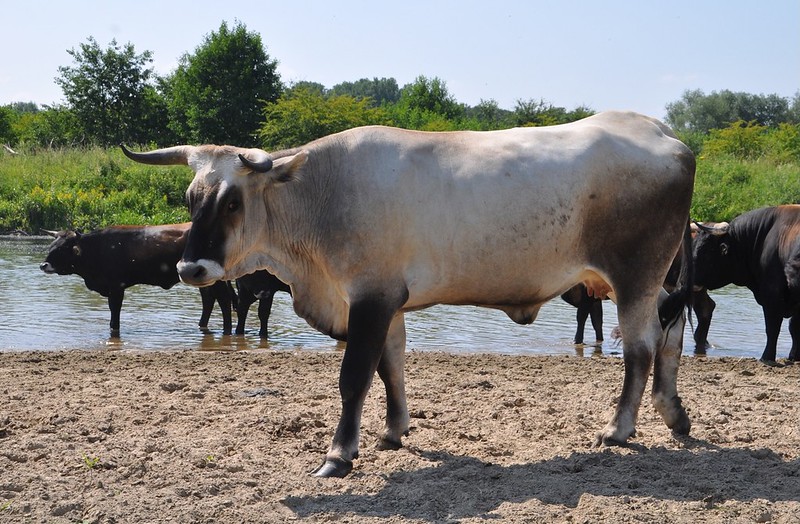 |
| "Larissa", 62,5% Chianina cow |
We also
went to Pöppelsche (not one of the ABU's herd), where there was a herd composed of Taurus crosses and usual
Heck cattle. One of the bulls also was Lidia-influenced. This herd shares the
reserve with some beautiful Exmoor Ponies.
 |
| Lidia-influenced bull and usual Heck cattle at Pöppelsche |
The ABU
interestingly has pure Koniks as much as Przewalski x Konik crosses, and one
pure Przewalski mare. I think that these crosses might represent the phenotype
that most European Tarpans displayed: bay dun colour, mealy mouth, short but
falling mane. Of course these crosses do not have the purpose to get Konik
genes into the Przewalski population, but other way round, and I think this is
good (actually, Koniks even might have Przewalski influence already). The 75% Konik
and 25% Przewalski horse looks very interesting because it has the typical
reddish bay dun colour of Przewalskis, but no pangare and mealy mouth. Life
in a wild-living horse herd is tough, there are constantly fights between the
stallions. The dominant Konik stallion killed its father, and wild
Przewalski horses in Mongolia are known to be even more aggressive.
 |
| Konik-Przewalski crosses |
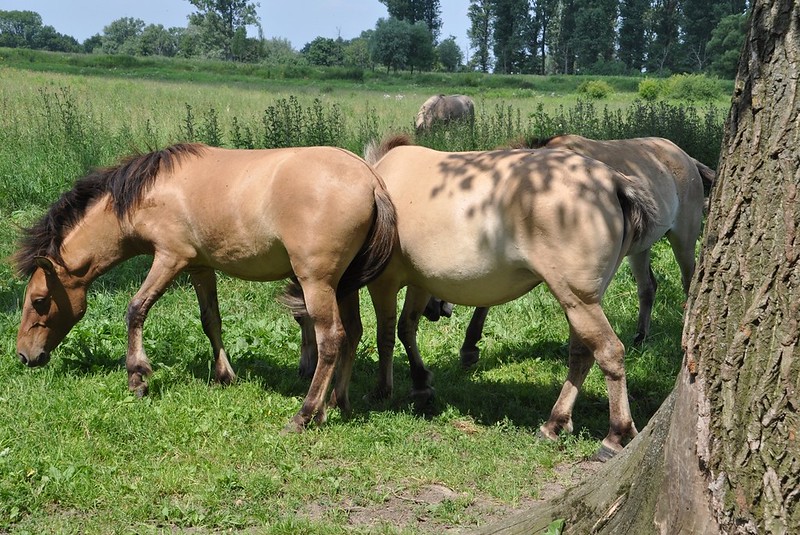 |
| 75% Konik 25% Przewalski + Konik x Przewalski |
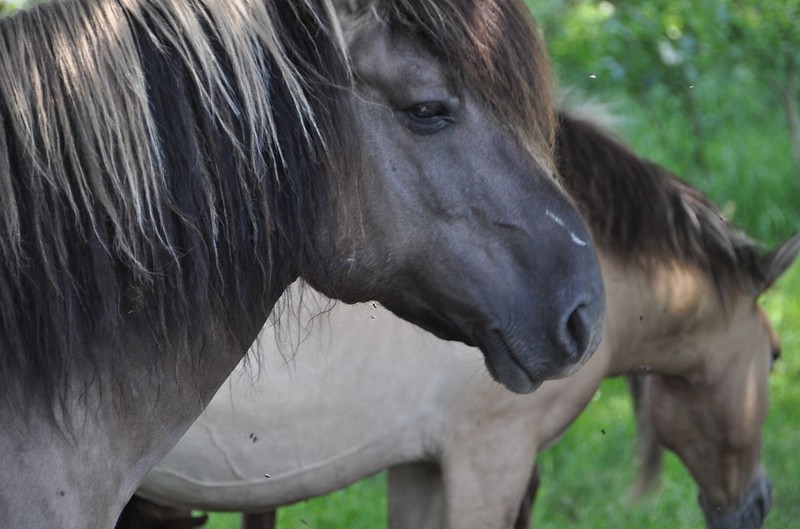 |
| Konik stallion |
To put it
in a nutshell, I really like the Taurus cattle from Lippeaue. Their behaviour appears natural to me, it is neither overly aggressive nor sluggish or tame, and their surviving capacity
probably is the same as in usual Heck cattle. They are very elegant animals. The
phenotype of some of the individuals, as you see on the photos above, resembles
the Aurochs to a large extent already. Surely the right colour and the right
horn shape/dimensions have yet to be stabilized, and (although the size is good
and much better than in Heck cattle already) the animals could be bigger on
average. With good selection, a very, very aurochs-like population can be
established, but it will take its time because inheritance is very coincidental
in heterozygous crossbreeds. Two very good individuals might produce
disappointing offspring and vice versa. The breeders from the ABU are aware of
that, therefore it is complicated to find out which individuals should be
selected out. Is a cow with good horns but the wrong colour less good than a
cow with bad horns but the right colour? Are long snouts and legs more
important than large and well-shaped horns? An individual that does not look
that good might produce good offspring combined with the right partner … that
sort of stuff. With more breeding locations and cooperation between the
breeders the progress can be speeded up, and not to forget that nature itself would
shape the cattle the way it is best if released in a large natural area where they can live more independently.
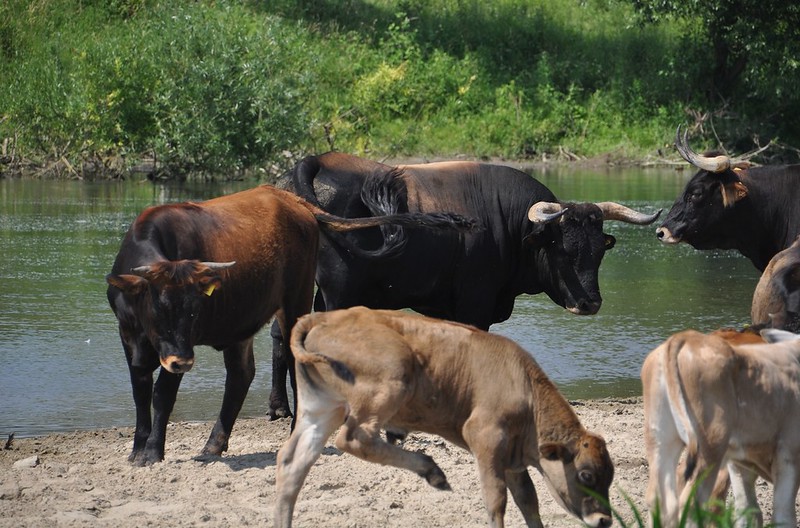
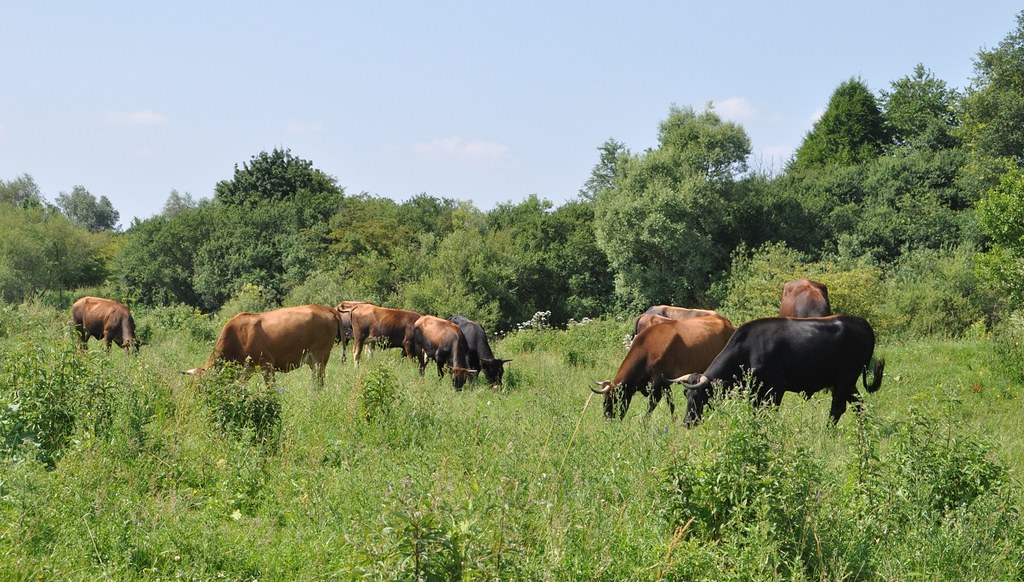
 |
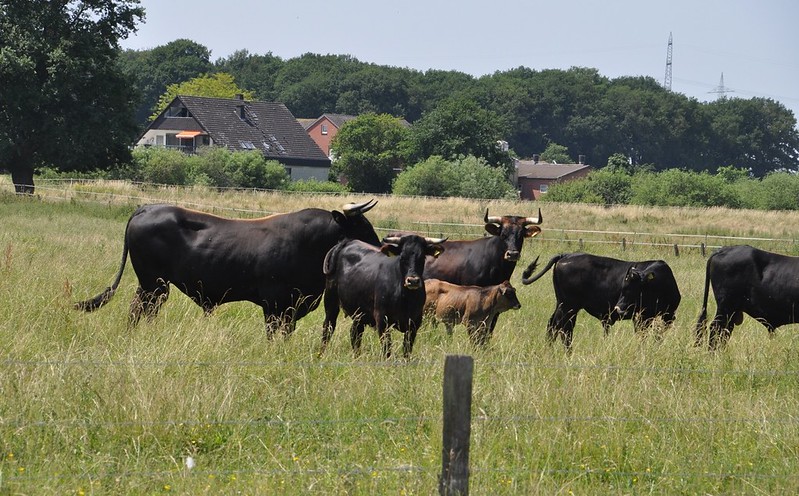 |
I really
enjoyed my trip, it was cool to go directly to the source and see the cattle. I
am curious on the future development of Taurus cattle, and I hope that such
cattle will play a crucial role in improving Heck cattle as a whole. The cattle at the Lippeaue are surely the most aurochs-like animals in Germany, and in my opinion might be better than many other primitive breeds on this worldon average.
If you want
to see more of the photos I took there, you can go to my flickR stream.





























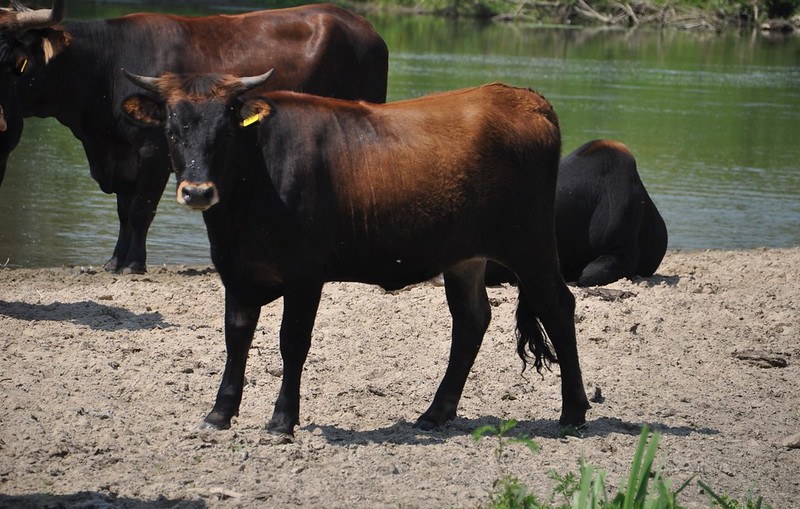
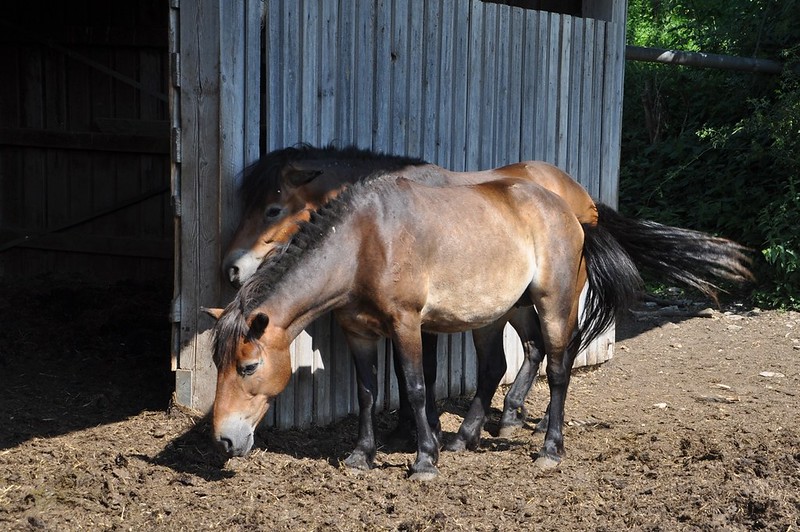


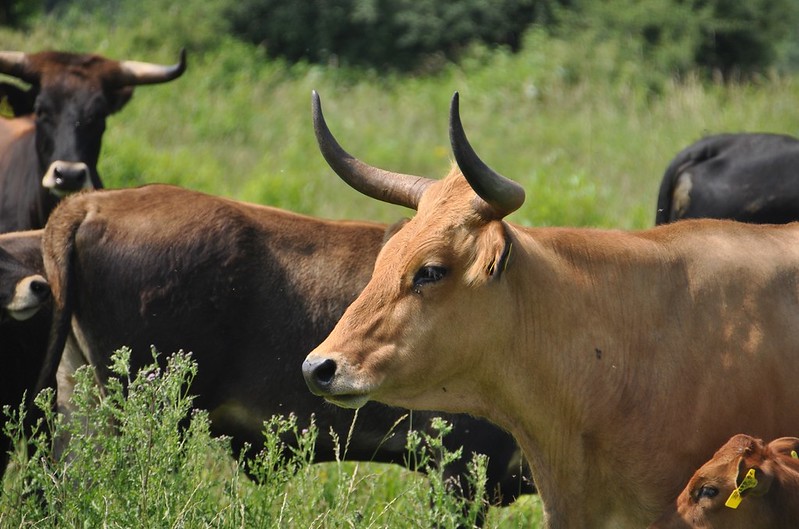
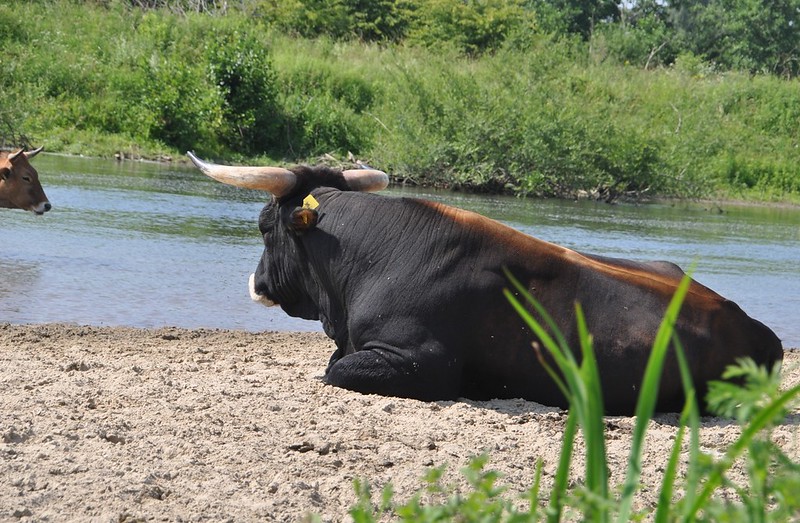
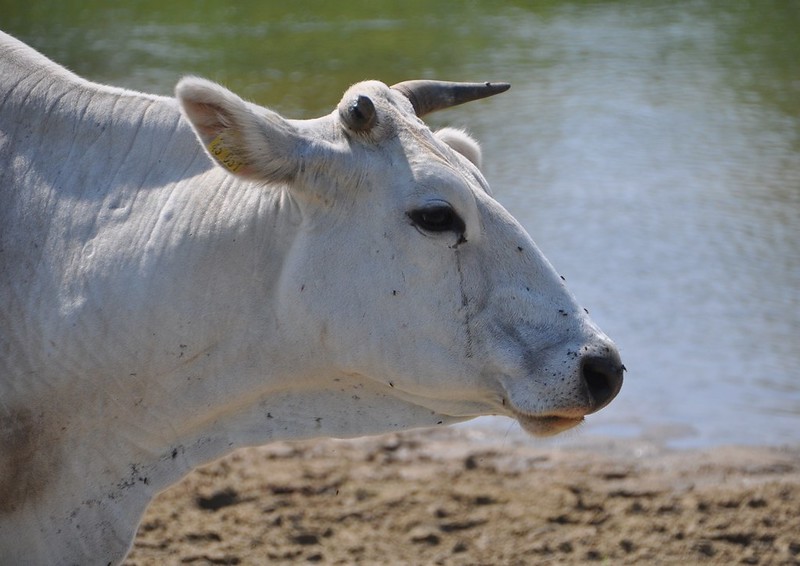
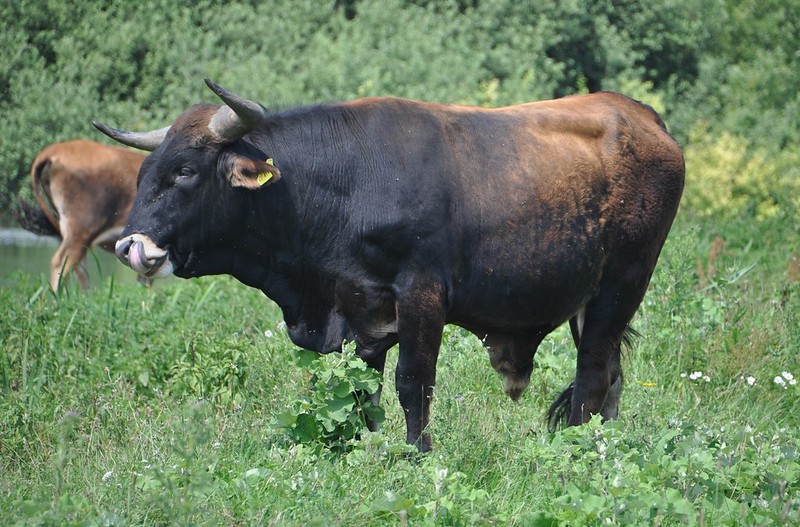
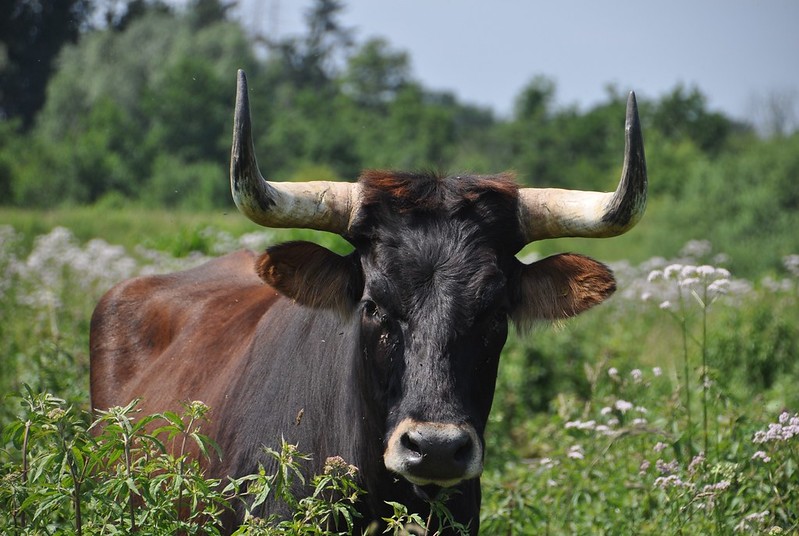
Maybe people can use Taurus cattle as a proxy of the Auroch in re-wilding Europe because they are so similar
ReplyDeleteDo you have any measurements of these or any Taurus/Tauros?
ReplyDeleteThese are in my opinion one of the best breeding-back herds. Quite consistent individuals with great colouring and some really good horns, and very elegant. The main problem I have is that some appear to be slightly too short-legged, and perhaps too docile as well.
ReplyDelete